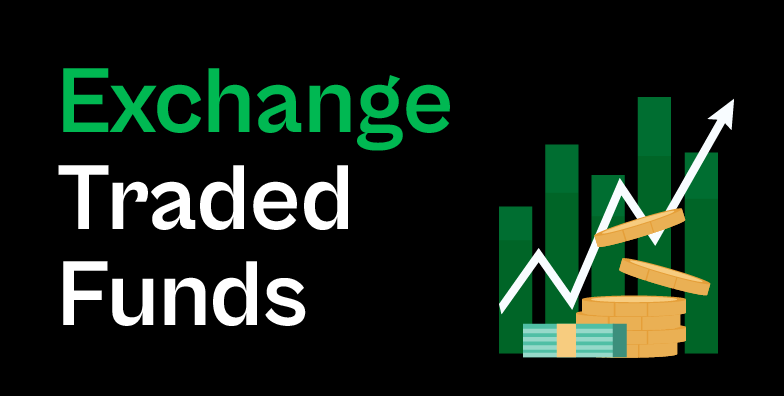
In the evolving landscape of financial markets, Exchange Traded Funds, commonly referred to as ETFs, have carved a significant niche among investors. These instruments offer a unique blend of features that make them appealing to both seasoned investors and beginners alike. In this article, we delve into the essence of Exchange Traded Funds, with a special focus on their workings, benefits, and implications. Additionally, we will explore CPSE ETF, a notable example of ETFs in the Indian market, and direct readers to helpful resources for further exploration.
Understanding Exchange Traded Funds
Exchange Traded Funds (ETFs) are investment funds traded on stock exchanges, much like stocks. An ETF holds assets such as stocks, commodities, or bonds and generally operates with an arbitrage mechanism designed to keep trading close to its net asset value (NAV), although deviations can occasionally occur. ETFs offer several benefits, including diversification, professional management, and liquidity.
Key Characteristics of ETFs
- Diversification: By investing in an ETF, investors effectively purchase a basket of assets. For instance, an ETF tracking the Nifty 50 Index will include stocks from 50 different companies, offering immediate diversification which can reduce risk compared to investing in individual stocks.
- Liquidity: ETFs can be bought and sold on the stock exchange at market prices, which generally reflect real-time valuations. This ease of trading makes ETFs an attractive choice for investors who might need flexibility in managing their portfolios.
- Cost Efficiency: Generally, ETFs have lower expense ratios compared to mutual funds offering a similar basket of securities. This makes them a cost-effective option for long-term investments.
- Transparency: ETF holdings are typically disclosed on a daily basis, allowing investors to know exactly what they own.
Introduction to CPSE ETF
The CPSE ETF, or Central Public Sector Enterprises ETF, holds significance within the Indian financial market. Managed by entities like MOTILAL OSWAL, CPSE ETF is designed to provide investors with exposure to a basket of central public sector enterprises. It tracks the performance of the Nifty CPSE Index, which consists of leading public sector companies in India.
Composition and Performance
The CPSE ETF is composed of stakes in multiple government-owned enterprises from a variety of sectors such as energy, oil and gas, and financial services. By investing in CPSE ETF, one gains exposure to key sectors driving the Indian economy.
For instance, the CPSE ETF might include companies like ONGC, Coal India, and NTPC. These are robust entities with backing from the Government of India, offering a mix of stability and growth potentials.
Calculating Investment Returns
Consider an investor in India planning to invest INR 50,000 in CPSE ETF. Assume the ETF’s NAV is at INR 20. If the market value increases by 10% over a year, the calculations would proceed as follows:
– Initial Investment: INR 50,000
– Number of Units Acquired: 50,000 / 20 = 2,500 units
– Value Post 10% Increase: 2,500 units × 22 = INR 55,000
– Profit: INR 55,000 – INR 50,000 = INR 5,000
This calculation illustrates potential growth, highlighting ETFs as viable investment instruments. However, market conditions are volatile, and past performance is not indicative of future outcomes.
Access Valuable Resources
For those new to ETFs or seeking to deepen their understanding, educational resources can provide critical insights.
Important Considerations
While ETFs present substantial opportunities, investors must be aware of potential challenges.
– Market Risks: Like all equity investments, ETFs are subject to market risks. Investment value may fluctuate based on market conditions.
– Tracking Errors: An ETF may not perfectly replicate the performance of the underlying index, leading to tracking errors.
– Tax Implications: Long-term and short-term capital gains taxes might apply, depending on the holding period.
Concluding Remarks
Exchange Traded Funds offer an accessible, flexible, and relatively lower-cost vehicle for engaging with various segments of the market. Whether it’s the diversified global exposure or targeted sector investment in domestic markets like CPSE ETF, they provide diverse options for Indian investors.
This quick guide seeks to equip readers with essential insights into ETFs while highlighting reputable resources for further learning. Remember, investing in the stock market carries inherent risks and gaining a thorough understanding of all pros and cons is imperative. Each investor’s circumstances are unique, so it’s crucial to evaluate one’s own financial strategy or consult with a financial advisor before making investment decisions.
Disclaimer: This article is for informational purposes only and does not constitute financial advice. Market conditions, policies, and regulations in India may affect the performance of investments. Investors are encouraged to thoroughly research and consider their financial situations before engaging in stock market activities. Make sure to consult with financial professionals as necessary to assess risks and align investments with personal financial goals.






